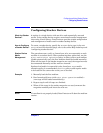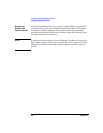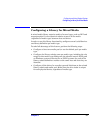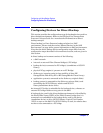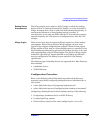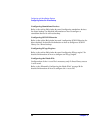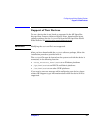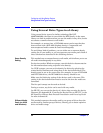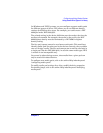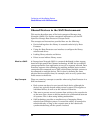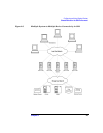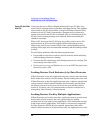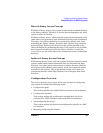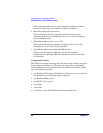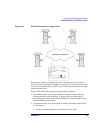
Configuring and Using Backup Devices
Using Several Drive Types in a Library
Chapter 242
Using Several Drive Types in a Library
Using several drive types of a similar technology like DLT
4000/7000/8000 (the same is true within the DDS family) in the same
library can lead to problems when you use the media in any drive, but do
not ensure a common format on all media.
For example, at restore time, a DLT 4000 cannot read a tape that has
been written with a DLT 8000 (highest density). Compressed and
non-compressed media cannot be used interchangeably.
To avoid these kind of problems, you can either use a common density
setting for all your media, or you can separate your media pools. Both of
these solutions are described in the following sections.
Same Density
Setting
This method uses a common format on all media, which allows you to use
all media interchangeably in any drive.
For devices used on Windows systems, consult the drive documentation
for information about using a specific write density.
On UNIX systems, you can set the density for drives by selecting the
related device filenames and using them in the device definitions. The
density must be set at the same value. For example, in case of DLT 4000
and DLT 7000 drives, the DLT 4000 drive density should be set.
Make sure the block size setting of the devices used is the same. This
setting in the device definition must be used at the time the media are
formatted.
The free pool concept can be used as desired.
During a restore, any drive can be used with any media.
On HP-UX, you can set the density of a drive when creating the device
filename. See Appendix B, “Creating the Device Files on HP-UX”, in the
HP OpenView Storage Data Protector Installation and Licensing Guide
for more information.
Different Media
Pools (on UNIX
and Windows)
This method separates the media used by one group of drives from the
media used by another group of drives, allowing you to better optimize
drive and media usage.




